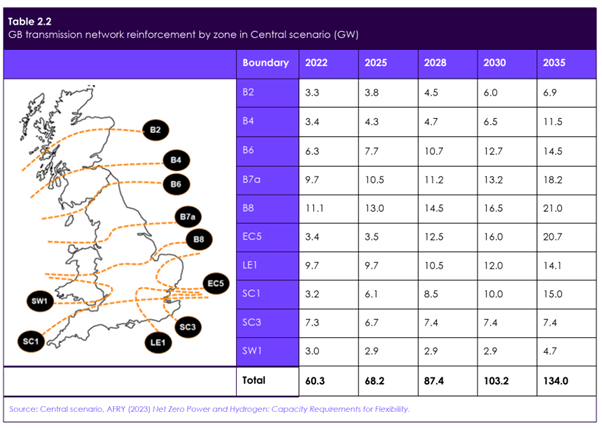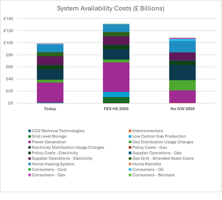The costs of a future energy system are hotly debated, are we looking in the wrong place? Do all...
2035 and the Constraint Problem
2035 and the Constraint Problem
There have been three new reports published in March, which have focussed on the implications of a decarbonised electricity network by 2035, which is of course government policy. The reports comprise a ‘thought piece’ by National Grid ESO titled ‘A week in the life of a Net Zero carbon electricity system in 2035’: https://www.nationalgrideso.com/document/277531/download
together with one from the CCC ‘Delivering a Reliable Decarbonised Power System’:
https://www.theccc.org.uk/publication/delivering-a-reliable-decarbonised-power-system/
plus an associated supporting report by the consultancy AFRY (formerly Pöyry and of course ILEX before that): https://www.theccc.org.uk/publication/net-zero-power-and-hydrogen-capacity-requirements-for-flexibility-afry/
All three reports lay bare the scale of the challenge that lays before us if we are going to achieve this target of a completely decarbonised electricity system over the next 12 years in a whole number of areas including the expansion of the renewable generation fleet, the consequent balancing issues on the power system, the need for further interconnection and storage, together with CCS, electrolysis and salt cavern hydrogen storage.
However, one particular issue that is raised in the AFRY report, and followed through in the CCC report that caused my jaw to drop, was the massive amount of electricity transmission reinforcement required. AFRY have modelled the changes required in the GB generation and demand profiles up to 2035, and looked at the capability of the NGC system to transmit the required power. They looked at 10 constraint boundaries and conclude that every single one needs to be reinforced such that its capacity is doubled on average.
The CCC say: ‘the scale of transmission reinforcement needs continues to be assessed by National Grid. It has stated that, in order to support the Government target of up to 50 GW of offshore wind by 2030, in the next seven years it will have to install more than five times the amount of transmission infrastructure in England and Wales than has been built in the last 30 years. The requirements in Scotland will add to this further. The analysis undertaken for this report found that in order to facilitate the delivery of the decarbonised system, all the electricity transmission network
boundaries examined would be expected to require some level of reinforcement, with an average doubling of their capability required between 2025 and 2035.’
This is laid out graphically in Table 2.2:

Those of us who have been involved in the power industry over the past 40 years or so will know that this challenging to the point of being completely unachievable. Leaving aside the recently commissioned 600kV DC undersea link down the west coast which cost £1.2 billion, most of this reinforcement is likely to require new 400kV overhead lines. We have only built one of these in England in the past 40 years, the Vale of York 400kV line for the Enron CCGT at Teesside, plus one in Scotland, Beauly-Denny. Beauly-Denny cost over £820 million, took 5 years to build and attracted nearly 20,000 objections during the planning process which itself took over 10 years from the identification of the need for the line to consent being granted by the Scottish Government. Understandably, no one wants new 400kV transmission lines running through the countryside!
Neither the CCC report nor the AFRY report looks at how anything like this level of reinforcement might be achieved in practice, including consenting, construction, equipment, staffing etc etc.
One might suggest that we need to find a solution to this issue before we start to build the additional offshore wind capacity required to avoid even more constraint costs on the system.
My jaw dropped further when this issue is completely glossed over by the NGC ESO report! They state: ’Finally, we assumed the transmission network could send power wherever it is needed, meaning that the network was unconstrained in its capacity. The impact of this is that power produced in the north of Scotland via wind turbine generation has no issue in travelling to the south of England where demand is highest. We know that this will likely over or underestimate power flows, but we focused on energy limitations to analyse how the system met demand.’
Thus we have one report from the ESO themselves that describes how the power grid might operate in 2035 with zero emissions, and a second one from the CCC (supported by AFRY) stating that this is only possible with unprecedented levels of transmission construction and hence highly unlikely to be achieved!



